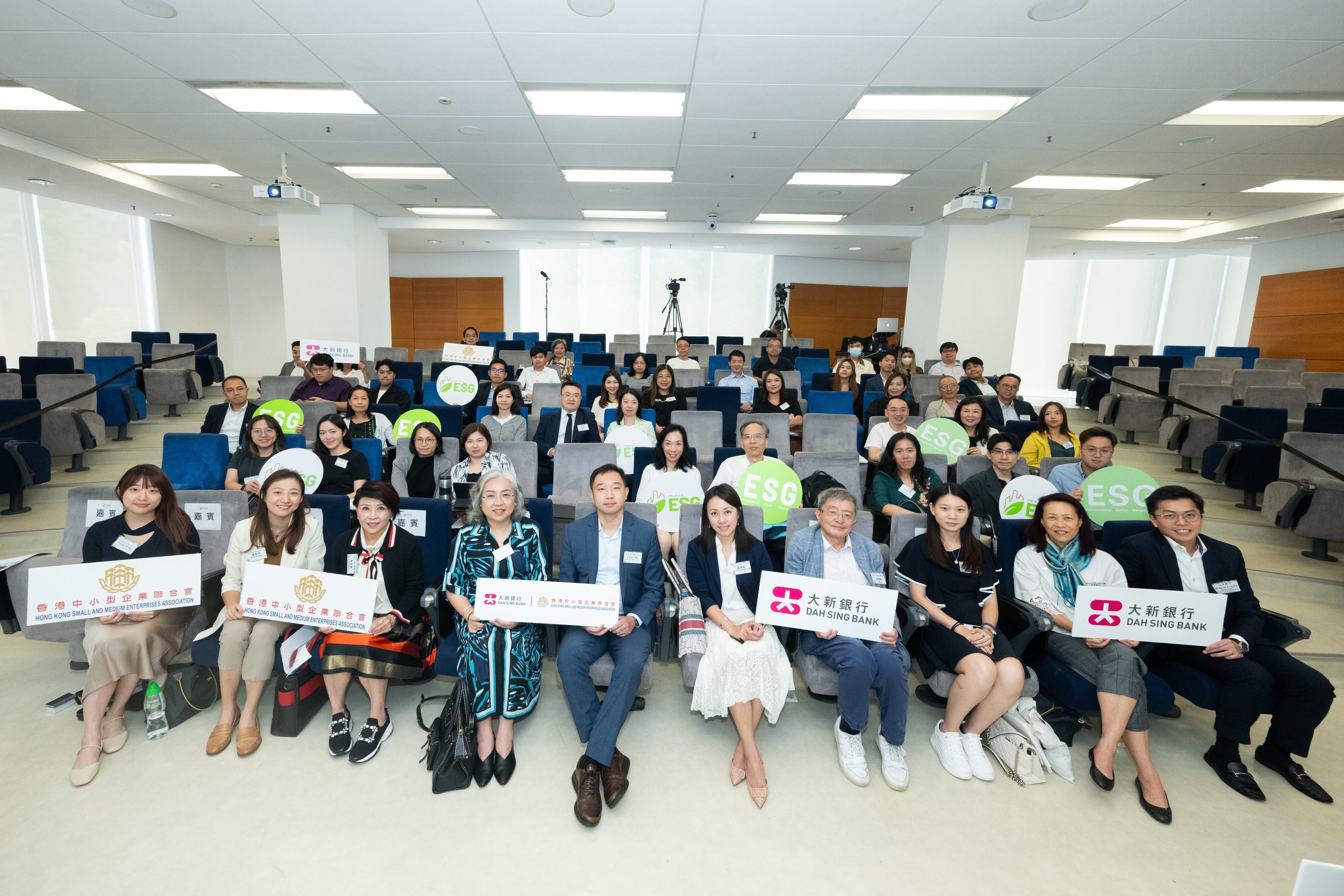
Environmental, Social and Governance (“ESG”) Newsletter 2025Q1: Carbon Market Analysis: Mainland China and Hong Kong
A 2024 Market Overview and Future Prospects
KEY HIGHLIGHT
- Significant growth in China's national Emissions Trading System (ETS) in 2024, with cumulative trading volumes surpassing 600 million tons of CO2 equivalent (CO2e) and a total trading value exceeding RMB 43 billion.
- Enhanced monitoring, reporting, and verification (MRV) systems were implemented across key industries, alongside the adoption of Continuous Emissions Monitoring Systems (CEMS) for real-time emissions tracking. Non-compliance penalties under the Order of the State Council of PRC No. 775 now include fines up to RMB 2 million and emission allowance reductions of 50-100%.
- The Core Climate platform by The Hong Kong Exchange and Clearing (HKEX) strengthened Hong Kong’s position as a regional carbon trading hub. The platform now supports over 90 participants, offering high-quality carbon credits from 50+ globally verified projects.
- The planned expansion of China's national ETS is projected to include an additional 1,500 companies and extend coverage by 3 billion tonnes of CO₂ equivalent, as reported by the International Carbon Action Partnership (ICAP).
Companies are advised to strengthen emissions data collection and reporting systems while engaging professional GHG assurance services to ensure compliance with evolving regulatory requirements.
EXECUTIVE SUMMARY
The carbon markets in Mainland China and Hong Kong have demonstrated exceptional resilience and growth throughout 2024, marking pivotal milestones in the region’s commitment to climate action. This analysis examines the markets' structural evolution, regulatory developments, and emerging opportunities, with particular focus on the successful expansion of Mainland China’s national carbon ETS to new industrial sectors and Hong Kong's strengthening position as a regional carbon trading hub.
MAINLAND CHINA’S CARBON MARKET
Market Overview and Development
The national ETS, which was launched on July 16, 2021, has matured considerably by 2024, merging as a cornerstone of the nation’s climate action strategy. As one of the world’s largest carbon markets, it now covers 2,257 entities in the power sector, representing more than 40% of the nation’s carbon emissions[1]. According to the Ministry of Ecology and Environment of China (MEE)[2], the market has demonstrated remarkable growth in trading volumes while maintaining stable carbon allowance prices.
By the end of 2024, cumulative trading volume exceeded 600 million tons of CO2e, with a total trading value surpassing RMB 43 billion. The market showed particular strength in 2024, with trading volume reaching over 189 million tonnes of CO2e and a trading value of more RMB 18 billion. In addition, this represents a 75% increase in trading volume (from 108 million tonnes in 2023 to 189 million tonnes in 2024) and an 80% increase in trading value (from RMB 10 billion in 2023 to more than RMB 18 billion in 2024) respectively. The year-on-year growth highlights the expanding liquidity and activity within China’s carbon trading market.

Market Mechanism and Pricing
According to Shanghai Environment and Energy Exchange[3], the national ETS has established a sophisticated pricing mechanism, with carbon allowance price ranging from RMB 69.67 to RMB 106.02 per ton in 2024. The MEE has strengthened market oversight, through the implementation of comprehensive measures to prevent carbon allowance price manipulation and excessive speculation, notably through the issuance of the Interim Regulations on the Management of Carbon Emission Trading.
Sector Expansion and Integration
By 2024, Mainland China has successfully taken steps to expand its ETS beyond power generation sector. According to the ICAP newsletter[4], the cement, steel, iron, and aluminium sectors are scheduled for inclusion in the national ETS. Companies in these sectors, previously part of regional pilot ETS programs, have transitioned to the national ETS. This broader inclusion has enhanced market liquidity, improved carbon allowance price discovery mechanisms, and prepared the system for phased implementation, beginning with a data-strengthening and familiarization phase (2024–2026) and progressing to a more stringent and refined system from 2027 onward.
Enhanced MRV Systems and Industry Inclusion in Mainland China’s ETS
The evolution of the national ETS has been marked by substantial improvements in emissions tracking through enhanced MRV systems across key industries. Following the successful model established in the power sector, entities in the cement, steel, and aluminium industries are now subject to monthly emissions reporting requirements, supported by rigorous evidence standards. To support this effort, the MEE will refine MRV guidelines with industry-specific parameters, while allowing the use of pre-approved default values where direct measurement proves impractical.
These emissions reports will undergo a rigorous three-tier review process at the national, provincial, and municipal levels, ensuring accuracy and accountability. The MEE is exploring the integration of CEMS for real-time tracking of greenhouse gas emissions in key sectors, representing a significant advancement in data verification capabilities. This development builds upon nearly a decade of emissions data collection from industrial sectors, commenced in 2015, encompassing industries such as building materials, non-ferrous metals, petrochemicals, chemicals, papermaking, and aviation.
The Order of the State Council of PRC No.775 on Interim Regulations on the Management of Carbon Emission Trading[5] took effect on May 1, 2024. Under Articles 21 to 26, non-compliant entities face penalties of up to RMB 2 million and potential emission allowance reductions of 50-100% for the following year. Key violations include failing to submit accurate and timely emission statistics, not disclosing required emission-related information, and submitting deficient annual emission reports.
The implementation of these significant penalties underscores the critical importance of robust greenhouse gas (GHG) assurance practices. Companies should now prioritize the establishment of comprehensive internal control systems and accurate emissions reporting mechanisms. Professional GHG verification and assurance services have become essential for businesses to ensure compliance and avoid costly penalties. Companies should proactively prepare by implementing systematic data collection processes, maintaining detailed documentation, and engaging qualified third-party verifiers. This regulatory framework signals a new era of stringent emission reporting requirements, making it imperative for companies to invest in proper GHG management systems and expert advisory services to navigate these complex compliance obligations effectively.
HONG KONG’S CARBON MARKET
Market Development and Structure
Establishment of the Core Climate platform by HKEX has facilitated voluntary carbon trading and enhanced market accessibility. The market structure emphasizes international connectivity and integration with the Greater Bay Area initiative.
Driving Corporate’s Carbon Neutrality
The HKEX’s Core Climate platform achieved a significant milestone in 2024 with the settlement of 50,000 tonnes of carbon allowances for Cathay Pacific Airways Limited as part of its voluntary carbon offset programme[6]. The platform now boasts over 90 participants and features high-quality carbon credits from more than 50 globally verified projects spanning Asia, South America, and West Africa. These diverse initiatives encompass forestry, solar, wind, and biomass projects, all validated under prestigious international standards including the Verified Carbon Standard (VCS) by Verra and the Verified Emission Reductions (VERs) by Gold Standard[7].
Hong Kong’s strategic position as an international financial centre positions it ideally to facilitate the global integration of Mainland China’s expanding carbon market. The Financial Services Development Council (FSDC) has identified this as a key opportunity for Hong Kong to establish itself as a leading regional carbon trading hub.
The cross-border carbon trading initiative serves as a crucial bridge Mainland China’s compliance-focused ETS with Hong Kong’s voluntary carbon market. This integration allows international buyers gain access to carbon credits generated and provide opportunities to offset their carbon emissions through the Core Climate. For instance, the collaboration between HKEX and Guangzhou Futures Exchange (GFEX), initiated in 2021, continues to drive the development of green and low-carbon markets in the Greater Bay Area region, aligned with Mainland China's “Carbon Peak and Carbon Neutrality” objectives[8].
OUTLOOK AND RECOMMENDATIONS
Market Integration and Expansion
Both markets demonstrate the potential for further integration and expansion. The Shanghai Environment and Energy Exchange (SEEE) anticipates that the Chinese market will incorporate additional sectors and enhance its trading mechanisms. As stated in the aforementioned report by the ICAP, the extension of the sectoral coverage of the national ETS would enable an additional 1,500 companies, thereby increasing the total amount of CO2e covered by 3 billion tonnes, which is equivalent to around 5% of global emissions. The FSDC emphasizes Hong Kong’s potential to maintain its position as a regional carbon trading hub, highlighting the importance of harmonized trading systems and standards between the two markets[9].
Conclusion
The carbon markets of Mainland China and Hong Kong have demonstrated remarkable progress through 2024, with their continued development playing a crucial role in achieving national and regional carbon reduction targets. The International Energy Agency (IEA)[10] has highlighted these markets significance in facilitating Mainland China’s transition to a low-carbon economy.
Looking forward
Baker Tilly Hong Kong maintains strong confidence in the future of Hong Kong’s carbon market. As a leading ESG advisory firm, we possess comprehensive understanding of carbon market complexities and their profound business implications. Our expert team, leveraging extensive experience in carbon emissions calculation and assurance, as well as carbon offset advisory, that provides forward-looking insights and guidance to Hong Kong companies navigating this emerging field. We aspire to be a catalyst in promoting Hong Kong’s sustainable development, helping companies identify opportunities and manage risks in addressing climate change.
Through strategic partnerships with businesses and community stakeholders, we are committed to building an efficient and transparent carbon market ecosystem. In this era of challenges and opportunities, Baker Tilly Hong Kong continues to lead industry innovation, contributing our expertise to Hong Kong’s sustainable future.
[1] Ministry of Ecology and Environment, PRC. (2024). Progress Report of China’s National Carbon Market. https://www.mee.gov.cn/ywdt/xwfb/202407/W020240722528850763859.pdf
[2] Ministry of Ecology and Environment, PRC. (2024). Successful Completion of Allowance Trading and Payment Clearance in the National Carbon Emission Trading Market in 2024. https://www.mee.gov.cn/ywgz/ydqhbh/syqhbh/202501/t20250105_1099975.shtml
[3] Shanghai Environment and Energy Exchange. (2024). National ETS Price Information. https://www.cneeex.com/c/2024-12-31/495878.shtml
[4] ICPA. (2024). China to expand national ETS to cement, steel and aluminum in 2024. https://icapcarbonaction.com/en/news/china-expand-national-ets-cement-steel-and-aluminum-2024
[5] State Council of PRC (2024). Interim Regulations on the Management of Carbon Emission Trading. https://www.cemf.net.cn/storage/tinymce/images/2fffa87e887acdac99e2ec61b8e27288664d92e2ccfa1.pdf
[7] https://www.hkex.com.hk/News/News-Release/2024/240801news?sc_lang=en
[9] SFDC (2024). FSDC releases report “Internationalising China’s Carbon Market: The Role of Hong Kong as an International Financial Centre”. https://www.fsdc.org.hk/en/media/fsdc-releases-report-internationalising-china-s-carbon-market-the-role-of-hong-kong-as-an-international-financial-centre
[10] IEA (2021). An energy sector roadmap to carbon neutrality in China. https://www.iea.org/reports/an-energy-sector-roadmap-to-carbon-neutrality-in-china










